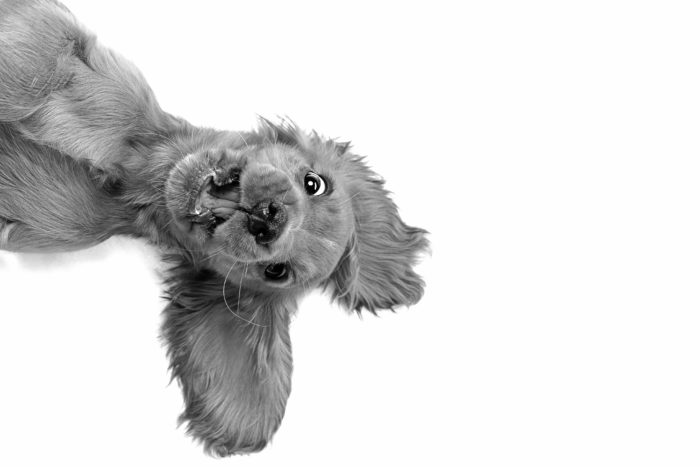The Release
Before we start to teach our pup, there is something that you must master first; it is fun and easy and extremely important, it is called the Release.
It is exactly what it sounds like, a break from whatever it is that you are teaching the pup. Simply put, it is a break from the work you are doing, designed specifically to let the dog know that he can relax and have fun.
It lets the pup know that right now they don’t have to pay close attention and that they can get up if they want. A release is “OKAY!!! Good job little critter! At ease fuzz butt!” It means that the dog can do whatever he wants and does not have to be tuned into you.
The release is significant because it formally ends the training session; it is black and white to the puppy, not gray and fuzzy. It sends a clear message. Sit means sit until further notice and down means down until further notice. The release is the further notice. It is important that we teach the puppy this from the very beginning.

If you get into the habit of stepping backwards and luring the puppy towards you when you release, or gently pulling the leash towards you as you step backwards, eventually, the dog will naturally come to you when you release (without any treat or leash).

Your intonation when you release your pup should be enthusiastic and happy.

It is a great idea to release with a quick game. It is also important to release frequently. If you release often with a game, the training and the games will start to seem like one. You will have a very happy dog, one who loves to work with you.
Keep in mind, whether you are consciously teaching your puppy or not, they are still learning! Every minute you spend together is a teaching opportunity.
Please check the Equipment List.
The following are the basic exercises to teach your puppy how to walk calmly on a loose leash, sit, down, stand, and come when called. These are the fundamentals that all puppies must learn.

A puppy in training at the National Service Dogs showing how to walk on a loose leash.
Walking beside you, watching you, or being calm, cool, and collected is just not natural for a puppy. It is good to keep this in mind when you are teaching the little critter not to pull on the leash when you are walking with him. Also remember that when a dog feels tension on his leash, he is naturally going to pull against it. With a puppy we have a golden opportunity. We have a little critter with no bad habits. More importantly, we are dealing with an animal that is not full-grown, can’t outrun us yet, and is in no position to overpower us. Depending on the breed, this is not usually the case with an adult dog.
As soon as the pup is able to cover ground by dragging you, it becomes habit. DO NOT PERMIT THIS TO HAPPEN! Not on the way outside to the bathroom. Not when you are heading to the park to play with his favorite pals! Never.
These are two exercises to teach your puppy to focus on you and to sit when you stop.
A No Pull Harness is something worth exploring when teaching a new pup to walk on a loose leash. It may help with excess pulling, on those occasions you want to get from point A to B quickly and don’t have the time or frame of mind to be training.

- Hold the leash in your right hand, doubling the leash over to take up any extra slack so that it does not drag on the floor or have any tension on it.
- Put your right hand at waist level, close to your belly button.
- Close your left hand over your right hand or let it hang naturally to your side.
- You may be tempted to grab the leash with your left hand and pull the pup back with it — avoid this.
- Treats and toys should be in an easy-to-access pouch and/or pocket.
- Read A word about which side your dog should be on, further on in this section.
This exercise can be done without a leash in an enclosed safe area. Luring teaches your puppy to focus on you and sit when you stop.

With a relatively hungry pup, use a tasty treat to get the pup’s attention by bringing it near his nose.

Once the puppy is focused on the treat, start walking, use a verbal cue such as “let’s go!” Keep the pup close beside you and focused on the treat.

After a few steps stop and lure pup into the sit. Let the pup have a tiny taste of the treat and continue on your way with the pup in tow.
If the puppy is jumping up, then you are holding the treat too high. Your arm should hang naturally by your side. For a tiny pup such as a toy breed, you will need to bend down to make sure your pup is staying focused on the treat. Or, use a wooden spoon with a sticky treat, such as peanut butter, to avoid having to bend over.
Proceed in baby steps for all the exercises. Once the pup is walking for a short distance nicely and you are feeling comfortable with what you need to do, you can start to cover more ground, change directions and change your pace. Remember to stop often and lure the pup to sit or down. Remember to break often (release the puppy) from the luring and enjoy a quick game (see Games).
